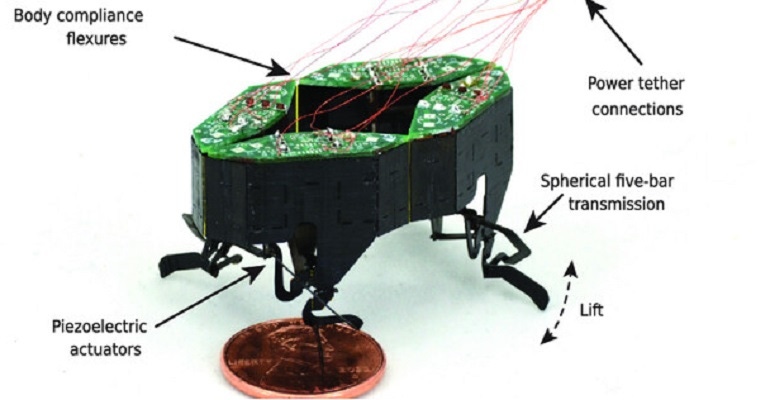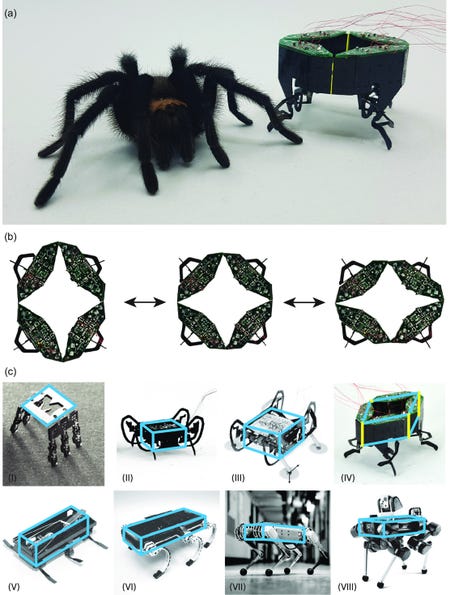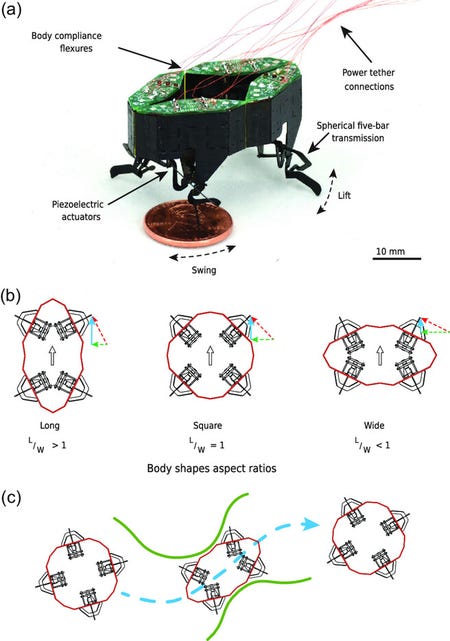Tiny Robot CLARI Squeezes into Tight Places
Engineers at CU Boulder have created a tiny robot with the capabilities of a spider or a fly and the ability to change its shape
August 30, 2023

Engineers at the University of Colorado in Boulder have designed a miniature robot that weighs less than a ping-pong ball and can fit in the palm of your hand. The robot is a compliant-legged articulated robotic insect (CLARI). It can passively change its shape from square to long and slender or wide like a crab. Right now, the machine has four legs, but its modular design could allow the team to build it out to eight legs.
Heiko Kabutz, a doctoral student in the Paul M. Rady Department of Mechanical Engineering at the University of Colorado in Boulder, and his colleagues introduced the miniature robot in a study published Aug. 30 in the journal Advanced Intelligent Systems.
Each of CLARI’s legs functions almost like an independent robot—with its own circuit board and dual actuators that move the leg forward and backward and side-to-side, similar to a human hip joint. Theoretically, that modularity might allow CLARI robots to take on a wide variety of shapes.
Miniature robots provide access to confined environments and show potential for applications such as search-and-rescue and high-value asset inspection. The capability of body deformation further enhances the reachability of these small robots in cluttered terrains similar to those of insects and soft arthropods. Motivated by this concept, CU Boulder engineers built an insect-scale robot with tethered electrical connections for power and control. CLARI was manufactured using laminate fabrication and assembled using origami pop-up techniques.

To enable locomotion in multiple shape configurations, CLARI’s body architecture is comprised of actuated leg mechanisms. The robot has eight independently actuated degrees of freedom driven by custom piezoelectric actuators, making it mechanically dextrous.
Going forward, the CLARI team intends to incorporate sensors into the robot so that it can detect and react to obstacles. The group is also working to improve the robot by giving it greater flexibility and strength. Kabutz noted that improvements in the robot’s capabilities will get more difficult as additional legs are added to CLARI.

The team chose articulated morphology for the robot body to combine the rapid, autonomous, and multi-gait locomotion capabilities of articulated laminate robots with the passive compliance-based embodied physical intelligence of soft material systems. They choose an origami-based design, laminate fabrication, and a pop-up assembly process for easy methodology of tuning geometry-based.
About the Author(s)
You May Also Like





